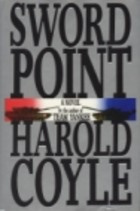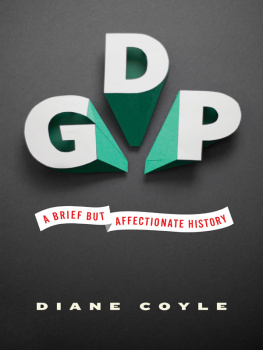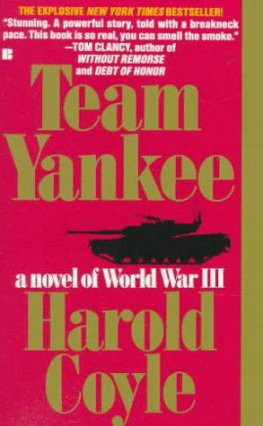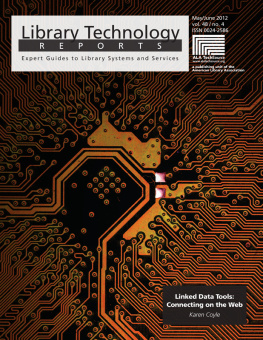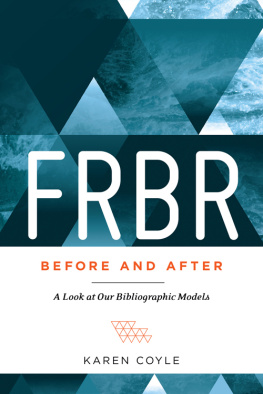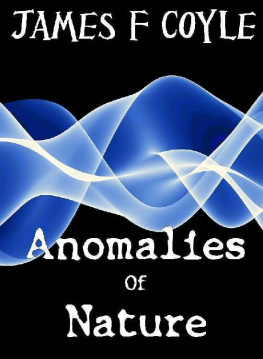Coyle - Sword Point
Here you can read online Coyle - Sword Point full text of the book (entire story) in english for free. Download pdf and epub, get meaning, cover and reviews about this ebook. year: 1994, publisher: Pocket Books, genre: Detective and thriller. Description of the work, (preface) as well as reviews are available. Best literature library LitArk.com created for fans of good reading and offers a wide selection of genres:
Romance novel
Science fiction
Adventure
Detective
Science
History
Home and family
Prose
Art
Politics
Computer
Non-fiction
Religion
Business
Children
Humor
Choose a favorite category and find really read worthwhile books. Enjoy immersion in the world of imagination, feel the emotions of the characters or learn something new for yourself, make an fascinating discovery.
- Book:Sword Point
- Author:
- Publisher:Pocket Books
- Genre:
- Year:1994
- Rating:5 / 5
- Favourites:Add to favourites
- Your mark:
- 100
- 1
- 2
- 3
- 4
- 5
Sword Point: summary, description and annotation
We offer to read an annotation, description, summary or preface (depends on what the author of the book "Sword Point" wrote himself). If you haven't found the necessary information about the book — write in the comments, we will try to find it.
Coyle: author's other books
Who wrote Sword Point? Find out the surname, the name of the author of the book and a list of all author's works by series.
Sword Point — read online for free the complete book (whole text) full work
Below is the text of the book, divided by pages. System saving the place of the last page read, allows you to conveniently read the book "Sword Point" online for free, without having to search again every time where you left off. Put a bookmark, and you can go to the page where you finished reading at any time.
Font size:
Interval:
Bookmark:
SWORD POINT [154-011-4.0]
By: HAROLD COYLE
Category: fiction military
Synopsis:
A cold war military thriller featuring infantry and tank tactics in a war between Iran, The Soviet Union and the United states.
POCKET BOOKS
New York London Toronto Sydney Tokyo
This book is a work of fiction. Names, characters, places and incidents are either the product of the author's imagination or are used fictitiously. Any resemblance to actual events or locales or persons, living or dead, is entirely coincidental.
POCKET BOOKS, a division of Simon & Schuster Inc. 1230 Avenue of the Americas, New York, NY 10020
Copyright 1988 by Harold Coyle Cover art copyright 1989 Dan Osyzka All rights reserved, including the right to reproduce this book or portions thereof in any form whatsoever. For information address Pocket
Books, 1230 Avenue of the Americas, New York, NY 10020
ISBN: 0-671-66554-5
First Pocket Books printing August 1989
10 9 8 7 6 5 4 3 2 1
POCKET and colophon are trademarks of Simon & Schuster Inc.
Printed in the U.S.A.
To A. A. Stovall: "When do I get to meet the company commander?" and Tony L. McLain: "Thanks, Dad."
Wars may be fought by weapons, but they are won by men. It is the spirit of the men who follow and of the man who leads that gains the victory.
-GEORGE S. PATTON
Weapons are an important factor in war, but not the decisive one; it is the man and not the materials that counts. -MAo TSE-TUNG Contents Foreword, xi Cast of Characters, xv
Glossary of Military Terms, 415 Acknowledgments, 427
Foreword
War is the realm of chance. No other human activity gives it greater scope; no other has such incessant and varied dealings with this intruder. Chance makes everything more uncertain and interferes with the whole course of events.
-KARL VON CLAUSEWITZ
This is a story about a war and the people fighting it. The time and place of the war are unimportant. What is important are the people, their roles and their experiences.
It is easy for modern man to focus on the technical aspects of war and seek solutions and resolution through science and technology. Science, after all, is logical and predictable. Technology is understandable and controllable. The Soviets, comfortable with science and technology, approach warfare and combat in a scientific manner. The ideal military system, from the Soviet viewpoint, is one that can deliver predictable results by using proper force ratios and other such definable inputs. Hence they establish norms and place high value on conformity and discipline so that actions in battle are a predictable constant, not an unknown. Doctrine in the Red Army has the same weight as regulations, and orders to subordinates are detailed and restrictive.
The United States, on the other hand, places its trust Xi
FOREWORD
in the ability of the individual soldier and his leaders. A great deal of freedom and discretion is afforded the American small-unit leader.
Doctrine is often viewed as a guide. Initiative on the part of the commander at all levels is expected, allowing commanders to issue what are referred to as mission-type orders, orders that leave the details for the subordinate commander to figure out.
Both systems of doing business have their merits and are based on the national character of the military that uses them. More important, properly used, both systems will work in war. Many examples from past wars support this. The Soviet Union, the victor of the greatest land wear ever waged, proved time and again in 1944-45 that its system worked. The United States also can point to its campaigns in that war and subsequent wars and state (that its system works. The interesting question is, What would happen if these two systems were pitted against each other? The answer would be determined not by the weapons and not by the cause for which they were being employed. It would be the people, not the system or the weapons, that determined the outcome.
Though weapons and tactics are important, they have the same thing in common: people. It is therefore the people that this story concerns itself with.
The war discussed in this novel takes place in the Islamic Republic of
Iran. An invasion of that country by the Soviets is not out of the question, since they have already "intervened" militarily in Iran twice-once in August 1941 and once in March 1946. Today, securing its southern border, squashing the spread of Islamic fundamentalism before it overflows into the USSR, preventing any military alliance between the Gulf states, and controlling the Strait of Hormuz, through which much of the
West's oil flows, are very real national objectives for the USSR, especially if it is unable to turn that region into a neutral zone-that is, one free of Western influence. At the same time, containing the Soviet
Union and keeping the Strait of Hormuz open are part of the United States's national policy. The concept of a limited confrontation in Iran is therefore far more realistic today than that of a general war in Western
Europe. xii
FOREWORD
This book is neither a textbook nor an attempt to predict the future.
The doctrine, tactics, plans and policies discussed do not reflect current or planned U.S. Army doctrine, tactics, plans and policy. Nor are the characters in the story based on any people, living or dead.
Any similarity between the characters in this book and real people is purely coincidental.
Many people will find fault with some of the actions and decisions of the characters. Some of the weapons effects and employment are equally open to criticism. This is, however, a novel, and the author uses his literary license, often.
Politics and strategic and operational plans and decisions are not discussed in detail except where they are important to the story and its characters. The reader should find himself in the same situation, limited to the immediate and narrow world in which the characters of Sword Point live, lacking a full understanding of the "Big Picture."
Times used throughout the story are local times and Greenwich Mean Time (GMT); Iranian time is three and a half hours ahead of GMT, accounting for the unusual differences between time zones reflected in this book.
All events are sequential.
All unit designations in the novel are fictitious, but their organizations and equipment allowances are, in general, in accordance with current tables of organization. All information on weapons effects and characteristics as well as information on Iran are from open source materials available to the general public. The author has never had access to contingency plans concerning operations in Southwest Asia or participated in simulations concerning Iran or the Gulf states. The scenario depicted here is pure fiction.
A Glossary of Military Terms will be found at the back of the book.
xiii Characters
IN THE ORDER OF THEIR APPEARANCE
AMERICANS
DONALD DUNCAN-Sergeant First Class
Platoon Sergeant, 1st Platoon, B Company, 3rd
Battalion, 503rd Infantry, 12th
Division
FRANCIS WEIR-Lieutenant General
Commander, 10th U.S. Corps "TACK NESBrrT-Master Sergeant Operations Sergeant, 3rd Battalion, 4th Armor, 2nd Brigade, 25th Armored Division
SCOTT DIXON-Major
Operations Officer (S-3) 3rd Battalion, 4th Armor, 2nd Brigade, 25th Armored Division
EDWARD LEWts-Major
Executive Officer, 2nd Battalion, 354th Infantry, Tennessee National Guard
HAROLD R. GREEN-Lieutenant Colonel
Commander, 2nd Battalion, 354th Infantry,
Tennessee National Guard xv
CHARACTERS
AMANDA MATTHEWS-1st Lieutenant
Assistant Intelligence Officer (S-2) 2nd Brigade, 25th Armored Division
JOHN EVANS-Captain
Commander,
Next pageFont size:
Interval:
Bookmark:
Similar books «Sword Point»
Look at similar books to Sword Point. We have selected literature similar in name and meaning in the hope of providing readers with more options to find new, interesting, not yet read works.
Discussion, reviews of the book Sword Point and just readers' own opinions. Leave your comments, write what you think about the work, its meaning or the main characters. Specify what exactly you liked and what you didn't like, and why you think so.

